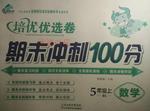题目内容
【题目】请根据以下提示,并结合具体事例,有英语写一篇短文。
Questioning is a bridge to learning. When you begin to doubt something and search for an answer,you will learn.
注意:1.无须写标题;2.除诗歌外,文体不限;3.内容必须结合你生活中的具体事例;4.文中不得透露个人姓名和学校名称;5.词数不少于120,如引用提示语则不计入总词数。
【答案】Questioning can lead to searching for an answer. If we are in the habit of raising doubts as to whether what we are told is true, we can find the correct answer and learn more.
Two years ago, our teacher offered us an answer to a difficult math problem in class. Although the answer seemed a little strange, nobody but I doubted it. Thinking that his solution might be wrong, I carefully analyzed the problem and tried to work it out in a different way. Half an hour later, I managed to find the correct answer. When I showed my answer to him, the teacher praised me for my independent thinking.
From this experience I have learnt that questioning can serve as a bridge that helps us to seek the truth.
【解析】本文是一篇开放式作文,要求考生根据提示,并结合具体事例,完成一篇英语短文。写作之前必须认真审题,注意描述具体事例时要用过去时态,人称用第一人称,内容紧紧围绕所给的主题,最后要有总结,形成首尾呼应。

 金牌教辅培优优选卷期末冲刺100分系列答案
金牌教辅培优优选卷期末冲刺100分系列答案【题目】近日,湖北襄阳一小学将广场舞作为课间操并纳入学校的校本课程。此事在你校学生中引起广泛讨论。请你结合下表用英语写一篇150词左右的短文。
70%的学生赞成 | 30%的学生不赞成 | 你的观点 | |
理由 | 1. 放松身心,塑造体型; 2. 欣赏音乐,锻炼身体; | 1. 广场舞是大妈舞; 2. 运动量不足; | …… …… |
注意:
1)作文应涵盖所有要点,可适当发挥,注意衔接与连贯。
2)词数120词左右。开头已经给出,不计入总词数。
3)作文中不能出现真实姓名和学校名称。
广场舞: square dancing 大妈:Dama
Recently, a primary school in Xiangyang, Hubei province has added square dancing to their curriculum ___________________________________________________________________________________________________________________________________________________________